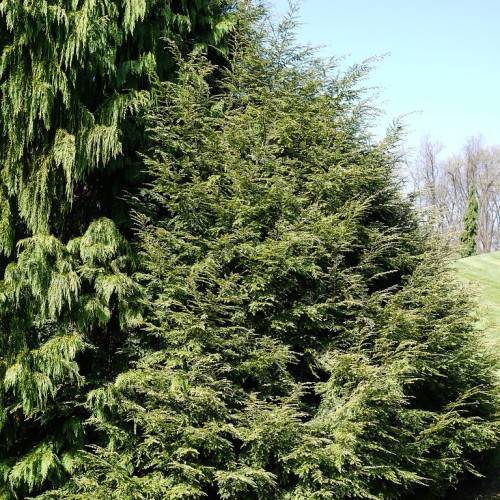
Canadian hemlock
Tsuga canadensis 'Gentsch White'
Also Known As - eastern hemlockCycle:
Perennial
Watering:
Average
Hardiness Zone:
3 - 7
Flowers:
Flowers In Spring
Sun:
Deep shade, Filtered shade, Full sun only if soil kept moist, Part sun/part shade
Soil:
Sandy Loamy Clay
Cones:
Yes
Leaf:
Yes
Growth Rate:
Moderate
Maintenance:
Low
watering
Canadian hemlock needs to be watered about once every 5-7 days, depending on the soil conditions. The soil should never be allowed to dry out completely; it is best to check the soil with your finger and water the plant when the top 1/2 inch of soil feels dry. If the plant is in a container, add water until it begins to flow out the bottom. Make sure to water thoroughly each time to ensure the soil is evenly moist throughout.
sunlight
Canadian hemlock thrives best in partial to full sun exposure. If planted outdoors, it is best suited for locations in North America that get at least 4-6 hours of direct sunlight each day. This plant should be able to handle full sun if it is provided with adequate moisture. However, if planted in a hot, dry location, partial shade should be provided throughout the day to protect the foliage from drying out. The morning sun is ideal as it will provide enough light but not as much stress from the afternoon heat.
pruning
Canadian Hemlock (Tsuga canadensis 'Gentsch White') should be pruned in the spring before new growth begins. Pruning of these trees should focus on removing dead, diseased, and crossing branches, with the goal of creating a tree with an open shape and an even spread of new growth. Depending on the size of the tree, you may want to consider removing no more than 1-third of the overall canopy at 1 time, in order to maintain the tree's natural shape and growth pattern. As with any pruning, always make sure to use clean pruners and to sterilize them in between cuts.
